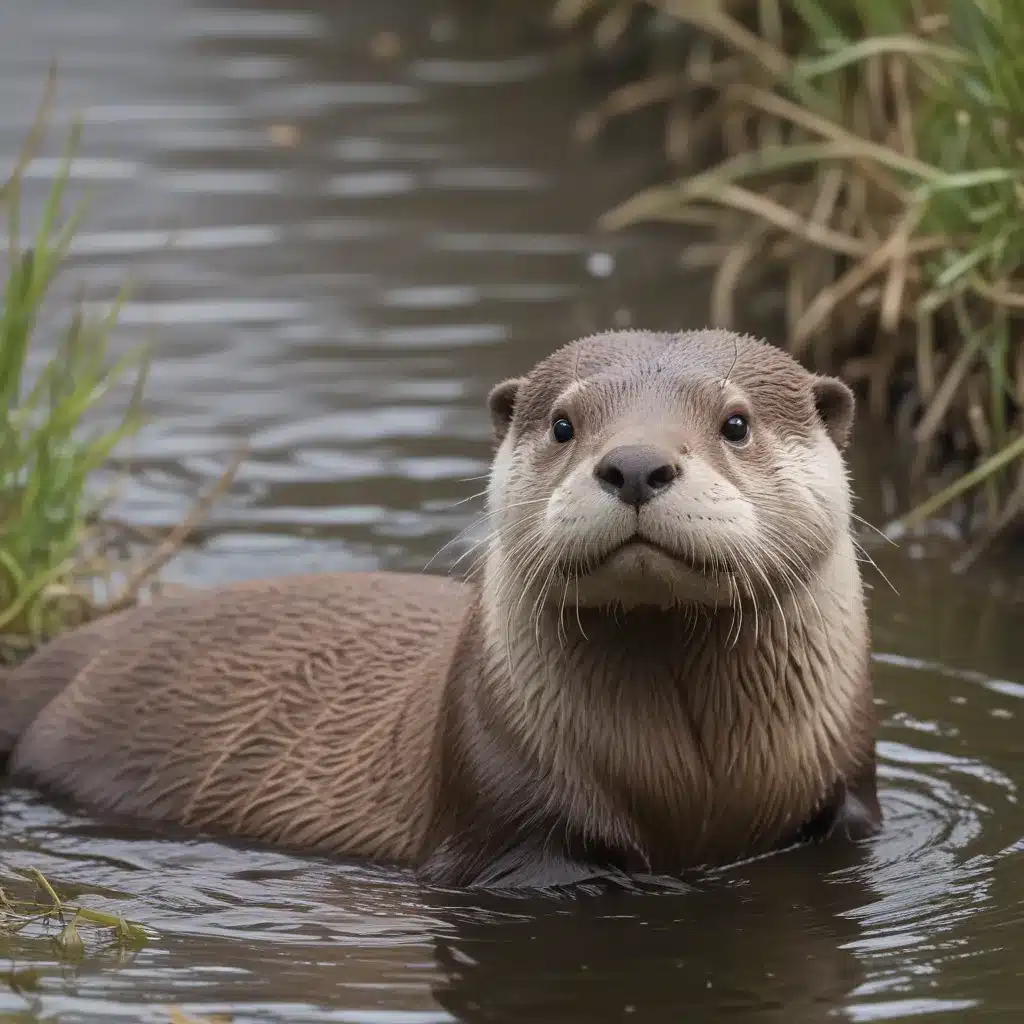
Uncovering the Secrets of Scotland’s Endearing River Weasels
As I step onto the dewy banks of the River Tay, the crisp Highland air fills my lungs. I’ve come to the Scottish Highlands on a mission – to go behind the scenes and uncover the hidden lives of one of nature’s most captivating creatures, the European otter. These playful, charismatic animals have long captured the imagination of visitors to this rugged corner of the world, and I’m determined to reveal the fascinating details of their day-to-day existence.
Otter Guardians: Navigating the Challenges
My journey begins by meeting Brydon Thomason, a local naturalist and otter specialist who has dedicated his life to studying and protecting these enigmatic mustelids. As we set out along the riverbanks, Brydon shares his wealth of knowledge, recounting tales of his work as a consultant and field guide on the acclaimed BBC documentary “Wild Shetland: Scotland’s Viking Frontier.”
“For the last 12 years, there hasn’t been a season go by that we haven’t worked on or featured in TV productions about Shetland,” Brydon explains, his eyes sparkling with enthusiasm. “We feel truly humbled by this privilege, and we approach it with genuine pride for Shetland, our way of life, and especially our natural history.”
As we pick our way through the mossy terrain, I can’t help but be in awe of Brydon’s dedication. He and his colleague, Richard Shucksmith, have poured their hearts and souls into ensuring that the stories of Shetland’s wildlife – including the otters – are told with the reverence they deserve. “The whole film-making process is fascinating and extremely emotive,” Brydon continues. “Everyone gets on the same page and gives it their all.”
A Rare Encounter: Witnessing Otter Family Life
Suddenly, Brydon stops in his tracks, his gaze fixed on the gently rippling water. “There,” he whispers, pointing to a spot just a few yards ahead. “Do you see that?” I strain my eyes, and after a moment, I catch a glimpse of a sleek, dark form gliding effortlessly through the current. It’s an otter, its whiskers twitching as it hunts for prey.
Brydon explains that this family of otters has been the focus of the team’s attention for weeks, allowing them to capture a level of intimacy rarely seen in wildlife documentaries. “It’s a dream assignment for us – to work on a family from their first few weeks of venturing out of their natal holt, through to the eventual family separation.”
As we watch, the otter emerges from the water, shaking its fur and pausing to groom itself. Moments later, two tiny otter pups come scrambling out from the riverbank, playfully chasing each other and tumbling over the mossy ground. I’m spellbound, witnessing a rare window into the private lives of these captivating creatures.
Respecting the Wild: Balancing Filmmaking and Conservation
Brydon is quick to emphasize the delicate balance that must be struck between the needs of the wildlife and the demands of the filmmakers. “It’s crucial we get the crew in the right place at the right time. But there is a balance between what the team might want, what will look good on screen, what’s possible – and most importantly, making sure the wildlife comes first. That is our primary responsibility.”
I’m impressed by Brydon’s unwavering commitment to the wellbeing of the otters, even in the face of the production’s ambitions. “The Maramedia team were respectful of this at every stage, and we were impressed by this from the outset. Many production companies want to push things, which never works with us, but they have a very good and responsible understanding of this.”
Capturing the Extraordinary: Unique Footage and Stunning Visuals
As we continue our trek along the riverbank, Brydon shares more insights into the making of the documentary. “Many of the sequences shot are truly unique, never having been filmed in Britain before. I am especially pleased for Richard to have some incredible footage in the film, as well as a stunning timelapse done by Rob Brookes.”
The attention to detail and the commitment to showcasing the otters’ natural behaviors is evident throughout the project. “The standard of wildlife filmmaking has moved on to an astonishing level in recent years through the combination of technology and indeed tenacity,” Brydon remarks. “Each new documentary series reaches new heights in how wildlife is filmed and brought to our screens, and now, through this fantastic film, Shetland will stand out like never before.”
A Celebration of Scotland’s Wild Heart
As our exploration of the otter’s world draws to a close, Brydon reflects on the broader significance of this project. “This film is a beautiful, exciting, and inspiring celebration of Shetland, its wildlife, cultural heritage, and natural beauty. It is the result of many individuals and professionals committing wholeheartedly to have made it what it is, and we, like everyone involved, are extremely proud.”
I can’t help but feel a sense of awe and appreciation for the tireless work of Brydon, Richard, and the entire Maramedia team. Their dedication to capturing the essence of Shetland’s wildlife, and the otters in particular, has created a truly remarkable legacy, one that will inspire viewers around the world to explore the stunning Scottish Highlands and uncover the secrets of these captivating river weasels.

